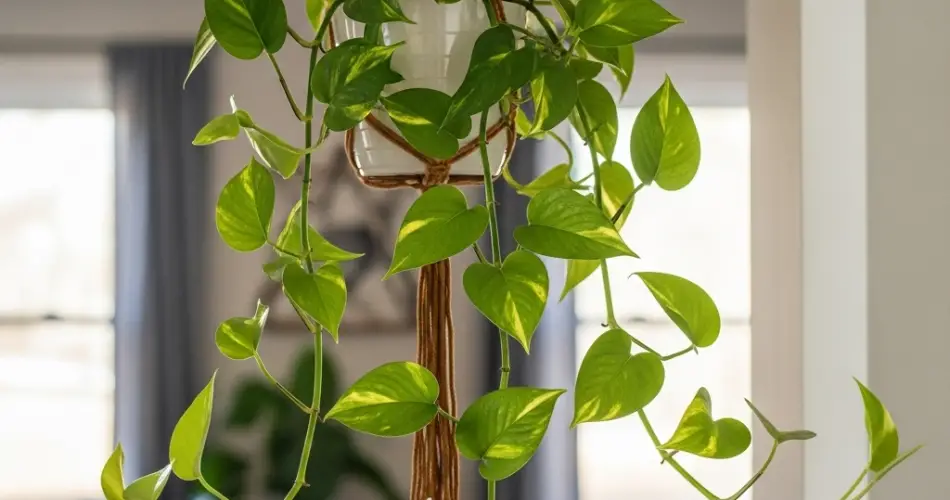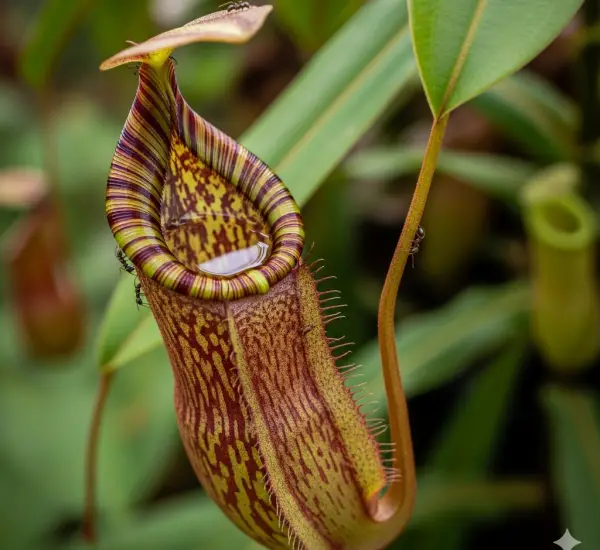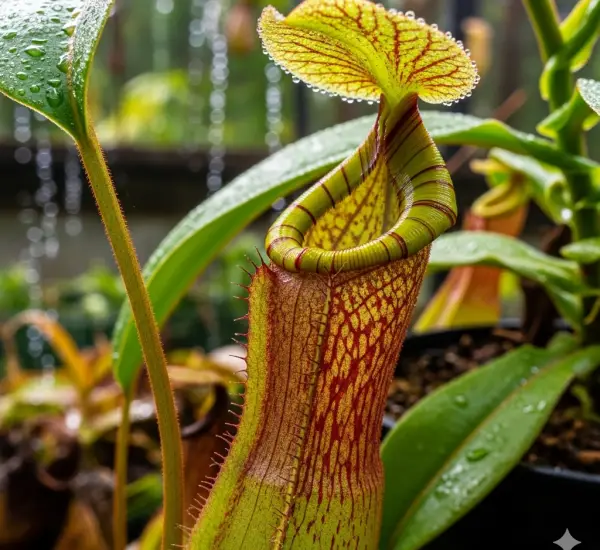Pothos (Epipremnum aureum), with its heart-shaped leaves and trailing vines, is one of the most adaptable houseplants available. Known for its ability to tolerate a wide range of conditions, it’s especially popular for low-light rooms where many other plants struggle. While pothos can survive in dim spaces, proper care ensures that it thrives, remains lush, and maintains vibrant foliage.
This guide outlines essential tips and strategies for growing pothos in low-light rooms, helping you keep your plant healthy and attractive with minimal effort.
Understanding Low-Light Conditions
Low light doesn’t mean no light. For pothos, low-light conditions refer to areas that receive indirect sunlight, shaded corners of a room, or spaces a few feet away from a window. Pothos naturally grows under forest canopies, so it has evolved to survive in environments with limited sunlight.
However, very low light slows the plant’s growth and can cause leggy vines or pale leaves if left unaddressed. Providing some indirect light ensures that your pothos stays full and maintains its deep green coloration.
Choosing the Best Spot
Even in low-light rooms, placement is crucial:
-
Place your pothos near a north-facing window or in a spot that receives filtered light from an east- or west-facing window.
-
Avoid direct sunlight, which can scorch leaves.
-
If natural light is extremely limited, supplement with a fluorescent or LED grow light to maintain healthy growth.
Rotation is also beneficial. Turn your plant a quarter turn every 2–3 weeks so all sides receive light evenly, preventing one-sided growth and encouraging fuller foliage.
Potting and Soil Considerations
Good drainage is essential for pothos, especially in low-light conditions where soil dries more slowly. Use a well-draining potting mix, ideally a standard houseplant soil blended with perlite or sand for improved aeration. Ensure the pot has drainage holes to prevent water from sitting at the bottom, which can lead to root rot.
Watering Tips for Low Light
Pothos in low-light rooms need less frequent watering than those in bright areas. Overwatering is the most common cause of plant stress in dim environments. Follow these guidelines:
-
Allow the top 1–2 inches of soil to dry out before watering.
-
Water thoroughly but avoid letting the plant sit in standing water.
-
Reduce watering frequency during cooler months when the plant’s growth naturally slows.
A moisture meter can help monitor soil moisture and prevent accidental overwatering.
Fertilizing in Low Light
Fertilizing helps maintain healthy foliage and encourages growth. Use a balanced, water-soluble houseplant fertilizer at half strength every 2–3 months during the growing season (spring and summer). Skip fertilization in fall and winter, as the plant’s growth slows and nutrient requirements are lower.
Over-fertilizing in low light can stress the plant, so moderation is key.
Pruning and Maintenance
Pruning is essential for maintaining bushy, attractive pothos:
-
Trim leggy stems to promote branching and fuller growth.
-
Remove yellowing or damaged leaves at the base of the stem to redirect energy to healthy foliage.
-
Wipe leaves occasionally to remove dust, which can reduce photosynthesis and affect overall plant health.
In low-light rooms, pruning also helps improve air circulation, reducing the risk of fungal issues.
Managing Common Problems
Even resilient pothos can encounter issues in low-light conditions:
-
Leggy growth: Occurs when the plant stretches toward light. Solution: prune long vines and rotate the plant to ensure even light exposure.
-
Pale or yellow leaves: Often caused by insufficient light or overwatering. Solution: adjust light exposure and water only when soil is dry.
-
Slow growth: Normal in low light; supplement with artificial light or occasional fertilization to maintain health.
Tips for Thriving Pothos in Low Light
-
Rotate the plant every few weeks for balanced growth.
-
Group multiple plants together to create higher humidity and a visually fuller display.
-
Use artificial light if natural light is limited.
-
Maintain stable indoor temperatures between 65–75°F (18–24°C).
-
Keep an eye out for pests like mealybugs or scale, which can appear even in low-light conditions.
Conclusion
Pothos is an ideal plant for low-light rooms, providing lush greenery and trailing vines with minimal maintenance. By carefully monitoring light, watering appropriately, pruning strategically, and providing occasional fertilization, you can ensure your pothos thrives even in dim spaces. With these simple care practices, your pothos will remain a vibrant and attractive addition to your indoor environment, proving that low light doesn’t have to mean low impact.



